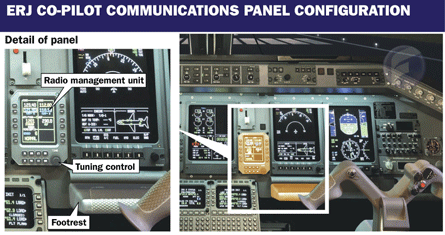US authorities have warned that pilots of the Embraer ERJ and its Legacy business jet sister could accidentally deactivate the type's transponder by placing their feet on the footrests, raising the spectre that this may have contributed to last year's fatal collision over the Amazon involving a Legacy and a Boeing 737-800.
The warning, sourced from the US Federal Aviation Administration, states that inquiries have shown that pilots using the footrests could inadvertently switch the transponder into 'standby' mode.
While the advisory does not specifically refer to the mid-air collision between the Gol 737 and a Legacy in which 154 people died, it crucially suggests a mechanism by which the Legacy's traffic collision-avoidance system (TCAS) could be rendered inoperative.
The National Transportation Safety Board confirmed earlier this year that, at the time of the September 2006 accident, Brazilian air traffic control was not receiving transponder returns from the Legacy and the aircraft's collision-avoidance system was not functioning.
Air traffic control frequency and transponder management on the type is performed through the radio management units which, on certain cockpit configurations, are located on the lower edge of the central instrument panel, adjacent to the co-pilot's footrests. On the right-hand radio management unit, in particular, the tuning knob is situated next to the left footrest behind the control column (see graphic).

"During an investigation the FAA discovered that crew members who had the simple habit of placing their shoe on the footrest just below the instrument panel could inadvertently put the [air traffic control] transponder into 'standby' mode, or change radio frequencies without the crew's awareness," says the FAA in a safety alert for operators.
Pilots might not notice the error, it adds, because the indication on the pilots' flight display would be shown in white characters which are not as noticeable as differently-coloured caution messages.
Switching the transponder to 'standby' would stop TCAS from operating, and provide no air-proximity warnings to the crew.
The FAA says that operators of the Embraer ERJ and Legacy family should address the possibility of this situation arising, during their pilot training programmes. The International Federation of Air Line Pilots' Associations has also highlighted the potential hazard in a safety bulletin.
European air navigation safety organisation Eurocontrol adds that pilots should routinely scan relevant displays during flight to ensure that the transponder and collision-avoidance systems are operating.
Source: Flight International























